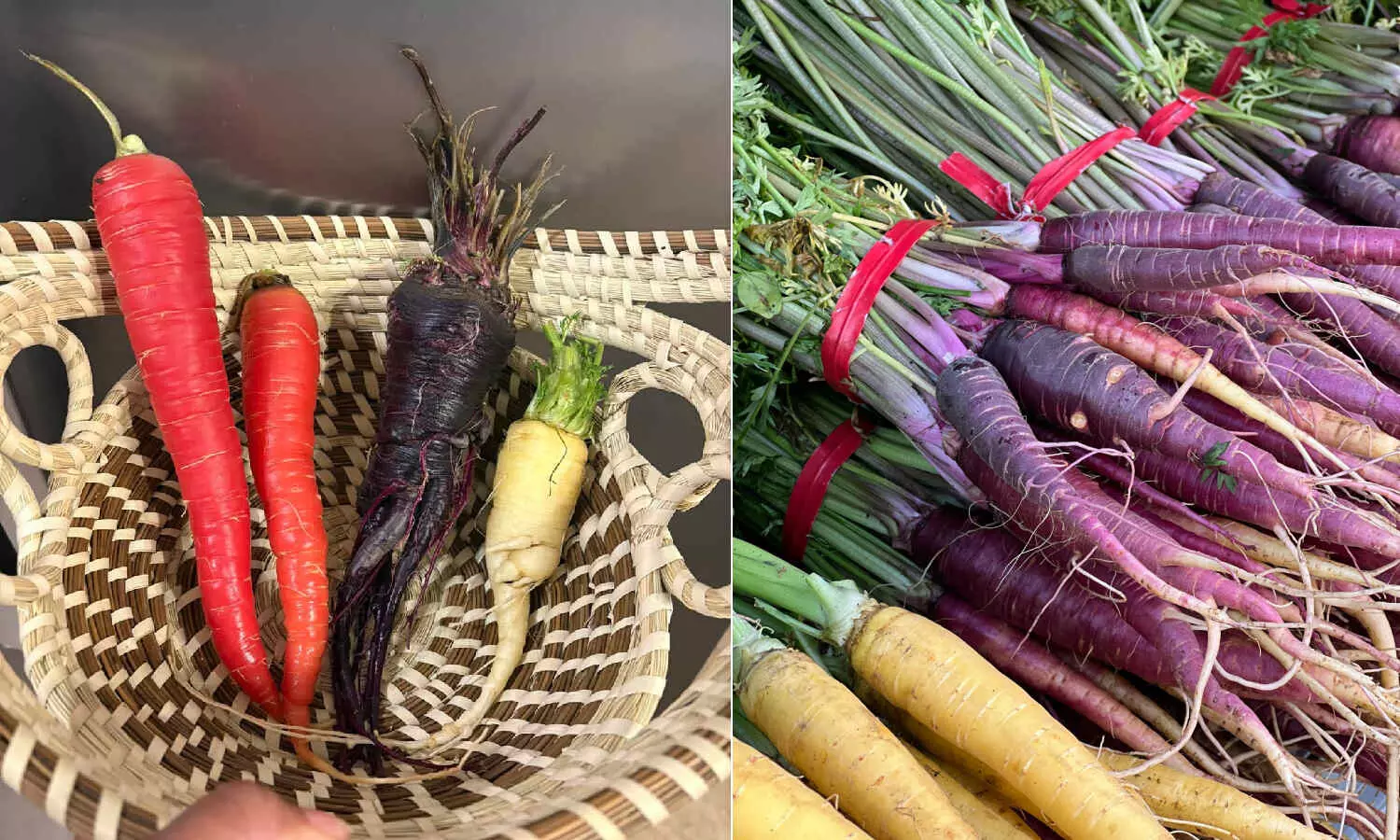The history of colourful carrots
Carrots are one of the most popular vegetables to eat. They’re sweet, crunchy, and an excellent source of vitamin A.
By Beyniaz Edulji
The history of colourful carrots
Carrots these days are coming in all colours: purple, yellow, red, or white carrots. ‘Rainbow’ carrots are being sold in many grocery stores. Carrots used to be only orange until recently. The taste of each color differs by variety, but there isn’t a drastic flavor contrast between them. Some varieties have a sweet and spicy taste, while others are sweeter than orange carrots. However, Orange carrots remain the most popular.
Carrots are one of the most popular vegetables to eat. They’re sweet, crunchy, and an excellent source of vitamin A. But the classic orange carrot we all know and love is actually not the original color of carrots. It is believed that carrots originated in Asia around AD 900 and were actually yellow and purple in color. Orange carrots did not come along until around the 1400s to 1500s.
Orange carrots arose from a mutation or cross between yellow and white carrots in Western Europe around the 15th century, with Dutch farmers popularizing them in the 16th and 17th centuries through selective breeding. They were cultivated for their sweeter taste and higher vitamin A content, and legend says they were also grown as a patriotic symbol honoring William of Orange. However, their orange colour in soups and stews has also made them very popular.
Mutation and selective breeding
Orange carrots are believed to be the result of a natural mutation or accidental hybrid of existing yellow and white carrots, which had been cultivated for thousands of years. In the 16th and 17th centuries, Dutch farmers began selectively breeding these mutated carrots, favoring traits like sweeter taste, brighter color, and increased beta-carotene.
William of Orange
A popular story claims that Dutch farmers grew orange carrots as a tribute to William of Orange, a leader of the Dutch revolt against Spanish rule. The Netherlands' national color was orange, making it a patriotic symbol.
Popular in Europe
The Dutch farmers' efforts led to orange carrots quickly gaining popularity across Europe, overshadowing the original white and yellow varieties that were once more common.
Nutrient values
Purple carrots are high in anthocyanins, which are rich in antioxidants.
Yellow carrots contain xanthophylls, which are linked to having good vision.
Red carrots are a good source of lycopene, which can help fight against heart disease and some cancers.
White carrots lack color, but not nutrients, as they are a rich source of fiber.
Orange carrots are rich in beta- and alpha-carotene, which are great for reducing your risk of eye diseases.
In India, carrots are used in salads, raitas, halwas, and the blackish-purple carrots are used to make kanji. Kanji is a probiotic drink, very popular in North India. Much like Kombucha, but the process of making kanji is entirely different. It is extremely good for the gut and improves digestion. Traditionally, the Kanji recipe is made with black carrots, and this drink has a dark purple color. If you do not get black carrots, you can make this with red carrots, or even orange carrots.
Kanji Recipe
Ingredients
6 Purple or red carrots
2 beetroots – small-sized
2 litres of water, boiled
2 teaspoons Red Chili Powder
1 tablespoon black mustard seeds, ground
1/2 tablespoon black salt
½ tablespoon pink salt
Instructions
Peel the carrots and beetroots.
Chop into 2-inch-long sticks.
Boil water and cool.
In a clean ceramic or glass jar with a wide mouth, add the carrots, beets, ground mustard powder, black salt, pink salt, and red chili powder.
Mix all the ingredients with a clean dry spoon.
Cover with a lid or tie a muslin or cheesecloth on the top of the jar. Keep the jar in the sun for 2 to 4 days or until fermented. Care must be taken not to leave this to ferment too much.
Stir with a wooden spoon every day.
When the kanji tastes sour, it means the drink is fermented.
Strain. The liquid is Kanji. You can store the carrot and beetroot pieces and use them separately as a pickle.
Serve kanji immediately or refrigerate. It stays good in the fridge for about a week.
Drink the kanji before meals or anytime during the day. Serve the fermented carrot and beetroot sticks as a pickle.
The sour-tangy carrots and beets can be included in a salad or added as toppings to your wraps, burgers, or sandwiches.